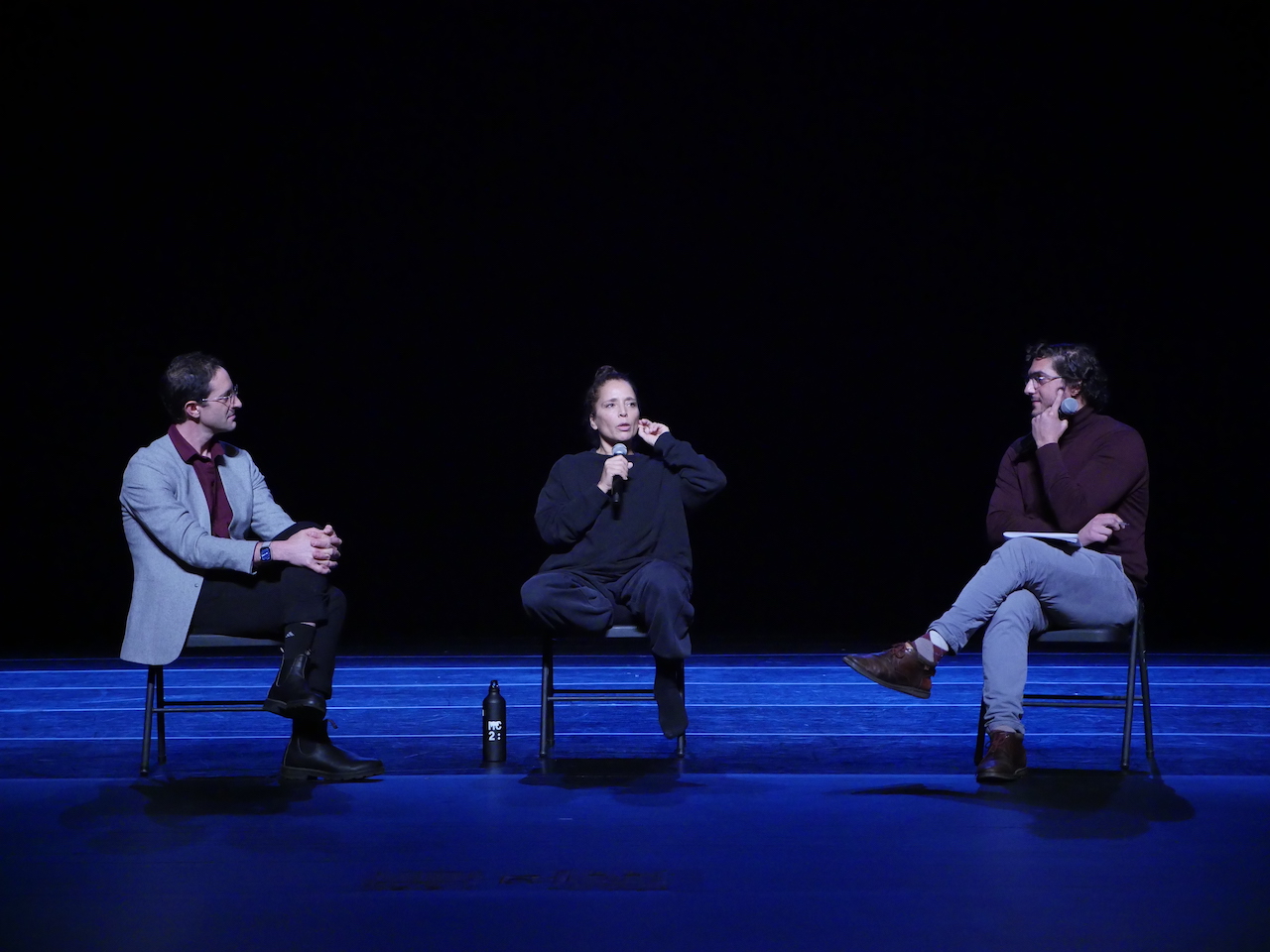
Renowned French-Algerian dancer and choreographer Nacera Belaza visited the University last week to perform the U.S. debut of her dance, “L’Onde,” on Friday, Oct. 13 and Saturday, Oct. 14. Her Saturday performance was followed by a talkback with Assistant Professor of Anthropology A. George Bajalia and Director for the Arts Joshua Lubin-Levy ’06 and a reception at the Ezra and Cecile Zilkha Gallery. She also led a dance workshop at Cross Street Dance Studio on Sunday, Oct. 15.
“The CFA has a long history of presenting exceptional dance performances, especially going back to [former Center for the Arts (CFA)] Director Pam Tatge [’84 MALS ’10 P ’16]—so the Villa Albertine approached us as a partner knowing that Nacera’s rigorous approach to choreography would be well taken care of by our incredible staff and warmly received by our faculty and students,” Lubin-Levy wrote in an email to The Argus.
Belaza started her own dance company “Compagnie Nacera Belaza” in 1989, and was awarded the 2008 Syndicat de la Critique Prize for her piece “Le Cri” and the Société des Auteurs et Compositeurs Dramatiques Choreographic Prize in 2017. She was also appointed Chevalier de L’ordre des Arts et des Lettres by the French Ministry of Culture in 2015.
“I am glad to come…to Wesleyan to introduce one of my last pieces, which is L’Onde,” Belaza said in a video message posted on the CFA Instagram. “The repeated movements allow us to reach a bigger state of openness and communion with the audience.”
“L’Onde” first premiered in 2020 at the Festival de Marseille. It is an abstract work performed in almost entirely dim and diffused light, paired with a hypnotizing and resonant looped and distorted blend of traditional Algerian rhythms and contemporary, nearly mechanical sounds. Featuring Belaza’s signature minimalist choreography, “L’Onde” is a deeply discomfiting performance that, in its moments of silence, allow the viewer to become intensely aware of their own body and its relation to others in shared space. Her U.S. tour is supported by a Villa Albertine and FACE Foundation program, FUSED: French U.S. Exchange in Dance.
“Her work takes up a really provocative and essential question about how dance can be a medium for communicating a kind of universal human condition without losing track of our differences,” Lubin-Levy wrote. “Though her work is inspired by culturally specific influences, the result is an abstraction that draws as much from studying the way bodies move in different parts of the world as it does from imagining the body as continuous with the space and the other bodies around it.”
In addition to her performance and workshop, Belaza also met with students during a lunch talk organized by Associate Professor of French and Letters Typhaine Leservot on Wednesday, Oct. 11 at 12 p.m. Those from sections of “Composition and Conversation” (FREN215) also received complimentary tickets to the performance.
“L’Onde was a unique performance that really brought the audience into a communal experience,” Alexandra Taylor ’25 wrote in a message to The Argus. “We all quietly watched as the performers seemed to spin endlessly for an hour. It was an event that made sense on Wesleyan’s campus. I’m glad I went!”
Students responded to the complex nature of Compagnie Nacera Belaza’s performance, as well as the difficulties of fully understanding her choreographic and lighting choices, especially without previous context of her style and background.
“This performance was hypnotic and captivating to watch,” Oliver Eig ’26 wrote in a message to The Argus. “It definitely will challenge lay people in the audience as it is quite experimental in its form, unlike any dance performance I’ve ever seen. This made it both frustrating and engaging for me.”
Belaza’s work remains inspirational and thought provoking. Nora Raine Thompson ’15, along with collaborator and dance artist Chloë Engel, presented a lecture and workshop on writing with and as dance on Thursday, Oct. 14, inspired by Thompson’s experience dancing with Belaza in 2018.
“[Belaza] said something wonderful in the workshop on Sunday, when asked about how her dancers navigated moving in and out of the light on stage—she said that it’s not about thinking you are visible when you’re in the light, and invisible when you’re in the darkness, but that you’re always present and that presence is meaningful and full,” Lubin-Levy wrote. “I love that idea, to hold on to the notion of dance…as a provocation to imagine what already exists in the space around us and how art can be [a way] of attuning and drawing that out.”
Upcoming CFA events include [En]Coded Keloid Archives, an artist lecture by Triton Mobley, on Tuesday, Oct. 17 at 4:30 p.m in the South Gallery of Zilkha, and an “Instrument—Body” series performance featuring bassist Brandon Lopez and musician and multimedia artist Cecilia Lopez MA ’16 on Friday, Oct. 20 at 2 p.m. in the Joe Webb Peoples Museum of Natural History located on the fourth floor of the Exley Science Center.
Rose Chen can be reached at rchen@wesleyan.edu.



Leave a Reply